As I mentioned in my article about the Whittington University Precision Long Range Course, I did not have any history (or any notable experience) with precision shooting at distance. When Legacy Sports offered the Christensen Arms Ridgeline to us for review, I was blessed to get the opportunity. Or I supposed “cursed” now that I have picked up the long range bug…
Construction
The Christensen Arms Ridgeline features a carbon fiber-wrapped barrel with a 1:8 twist, a spiral fluted bolt, scalloped bolt knob, dual front studs, and hand-laid fiberglass carbon fiber reinforced stock. The muzzle is threaded and has an SS Brake.

I’m not going to lie, that muzzle brake was loud and obnoxious, and required a flat rock put under it to reduce the dust cloud. But boy did it work well.
Christensen Arms guarantees sub-MOA accuracy via a bedded recoil lug, and Invar pillar inserts (Invar is a 36% nickel-iron alloy that exhibits a near zero rate of thermal expansion–yes I had to look that up :)).
It has a 3-Way Adjustable Trigger, and the 2.9 inch internal magazine (which has a pretty standard hinged floor plate of machined aluminum) will accommodate four rounds.
This lightweight rifle weighs in right around 6.3 pounds, has a 13.5 inch length of pull, a 0.6 inch drop at comb, and 5.7 inch drop at heel.
Observations
I had never shot 6.5 Creedmoor (and honestly didn’t really know much about the caliber) before this rifle. Everyone that I mentioned the rifle to (specifically the caliber) had nothing but good things to say, and I cannot recall a single person expressing a negative view. I’m not going to discuss the caliber in this review–we have posted on it here before.
The documentation that came with the Ridgeline suggested that it needed a specific break-in (the whole shoot-clean-shoot-moondance-clean-shoot-etc process). The first time I shot the rifle was during the class, and there was not really time to do a break in. I consulted with Jon Weiler (the chief instructor), and he said it would be fine to break it in by just shooting. So the first six shots were during the one-hundred yard zero.

Once we got on paper, the first three shots were on the edge. We adjusted the windage, and, well, you can see the results…
The rifle performed flawlessly, not having a single problem cycling the bolt. It took a little bit of work to figure out the Swarovski scope (after zeroing you have to use a special tool to reset the adjustment knobs), but that was the most challenging part.
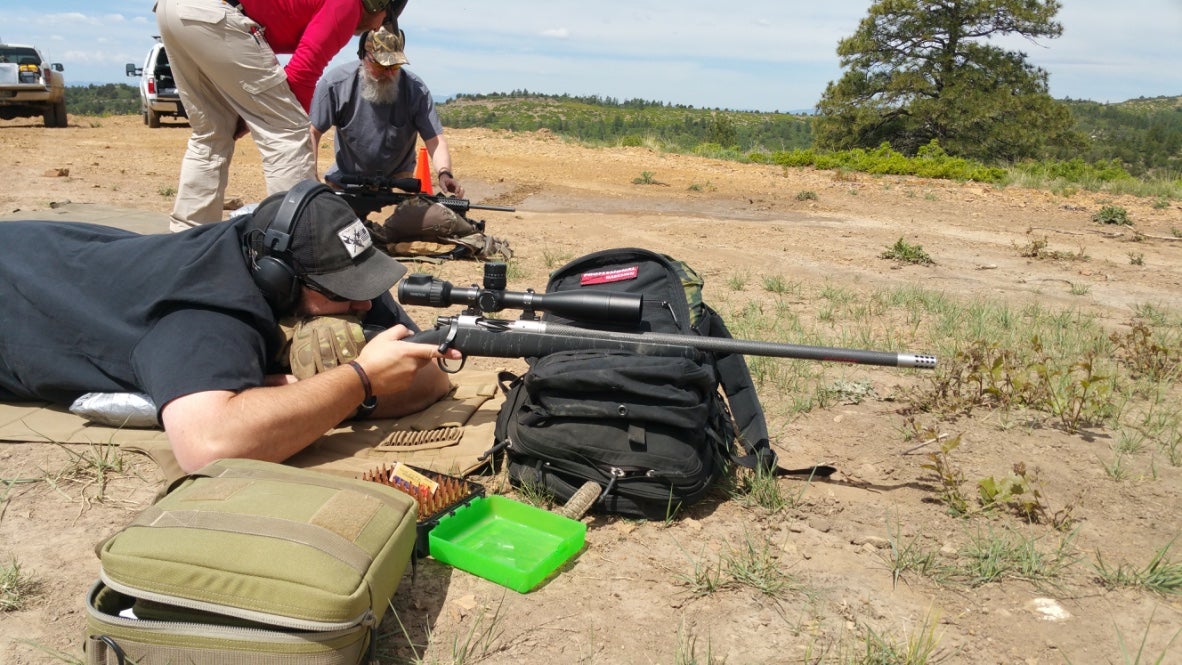
First rounds ever fired through her were during the hundred yard zero.
Despite having an adjustable trigger, I never bothered doing so. Whatever the preset was, it was perfectly fine for the class and all of the shooting I did with it. And at this point in my precision shooting career, I don’t know that I have the ability to discriminate the difference. Heck, I think the trigger on a stock Glock is fine… 😉
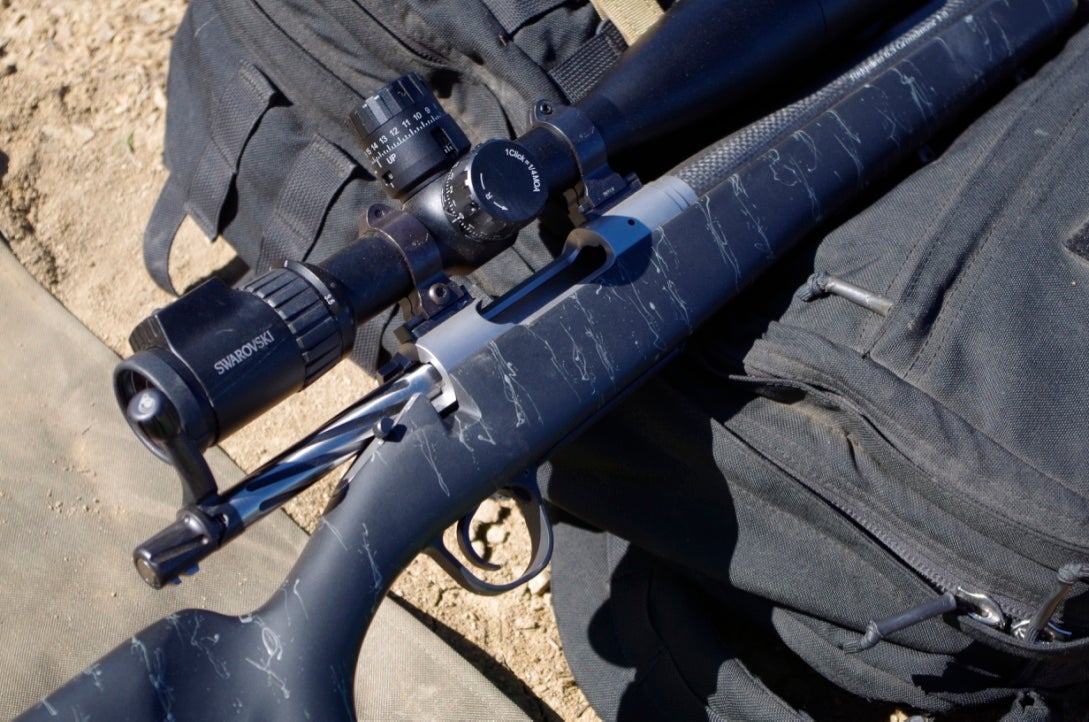
Check out that fluted bolt!
The rifle was super light, definitely a testament to the weight savings from the carbon fiber wrapped barrel. During the class, we basically staged near our vehicles so I didn’t have the pleasure of humping the rifle any significant distance. The Ridgeline was designed primarily for hunters and any weight reduction is helpful, especially in weapon systems. Compared to my Remington 700 (in the MDT chassis), the Ridgeline is a feather.
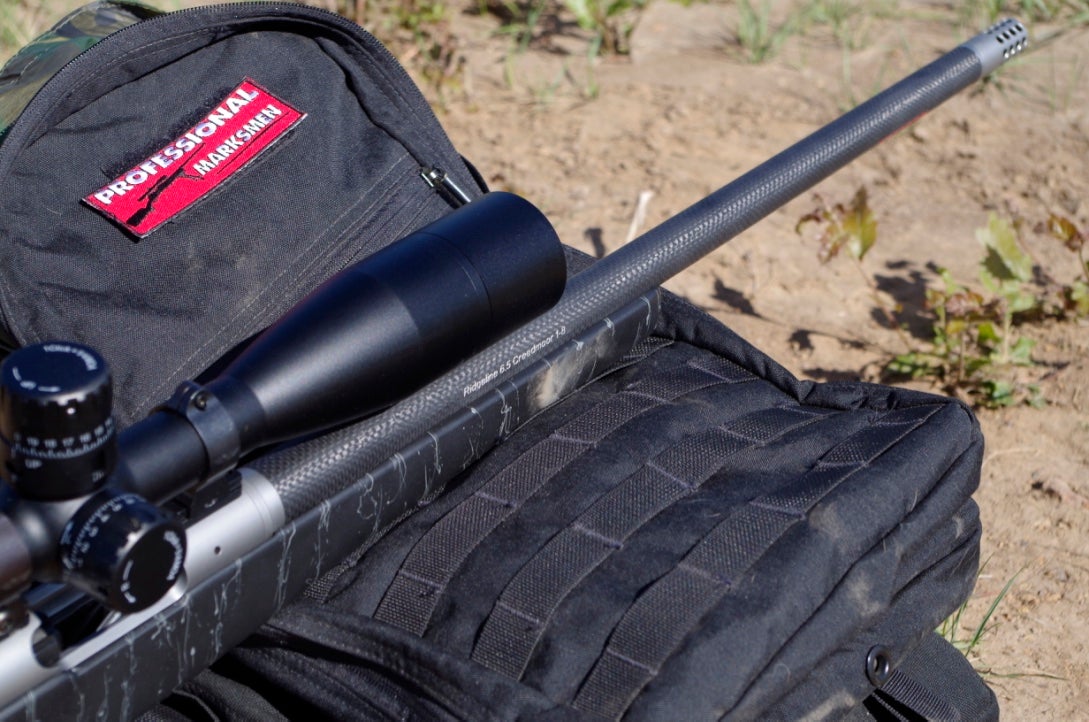
The carbon fiber wrapped barrel definitely made it much lighter.
The stock is a pretty standard “boat paddle” design, though it was definitely of a much higher quality than the Hogue that originally shipped with my Remington. My biggest complaint is that the stock was not adjustable to the shooter. But given it’s intended purpose for hunting (rather than precision shooting) the lack of ability to adjust can be excused. If this were my rifle, I would either put it in a different chassis/stock or I would make some permanent modifications to adjust the comb height–but that is because I am more interested in precision shooting than hunting.
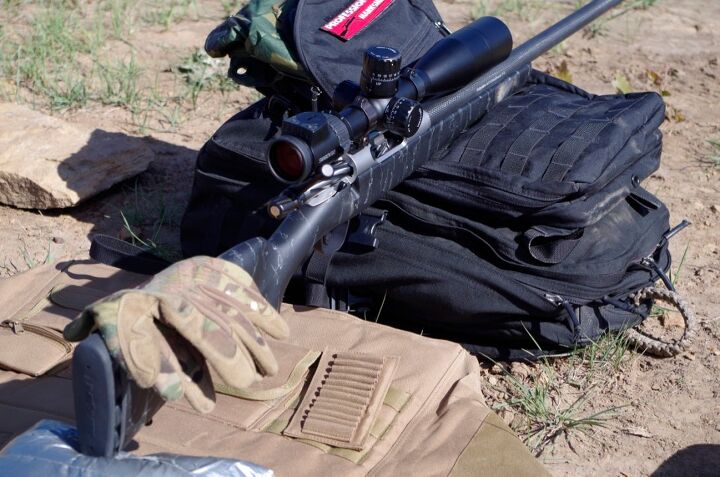
You can see my improvised cheek riser on the stock.
During the course, and a couple of sessions after, I fired a total of one-hundred sixty rounds. Eighty were Hornady ELD Match, and the other eighty were Hornady ELD-X. I started the course using the ELD Match, and was successful out to twelve hundred yards (on a 2MOA target), placing 4 of 7 shots in under a minute (I was a bit slower than the other shooters that had the benefit of box magazines).
The rifle had no discernible recoil with any of the rounds I fired. In all fairness, I only shot the rifle while using a pack as a rest with a sandbag as a rear stabilizer. In that configuration, I honestly could have shot it all day long–it was not really much different than shooting my AR-15. Oh wait, I DID shoot it all day long…
The Swarovski scope actually made the rifle a bit top heavy (the rest of the rifle was so light comparatively; and I would assume any decent scope would similarly change the center of gravity), so I had a little bit of an issue when I had it in the rest but was not currently stabilizing it. Compared to my Remington which I could setup, walk away from, come back and it would be in exactly the same position, the Ridgeline with the Swarovski would fall sideways. Not really a knock on the rifle at all–just observing that the Ridgeline, in it’s stock configuration, doesn’t have enough mass to stabilize itself. And I would argue that is something likely not that important to hunters.
Conclusion
I really enjoyed shooting the Ridgeline (with the notable exception of not being able to customize the comb height since it was a review rifle). It performed flawlessly, and definitely drew positive attention and comments every time I took it out.
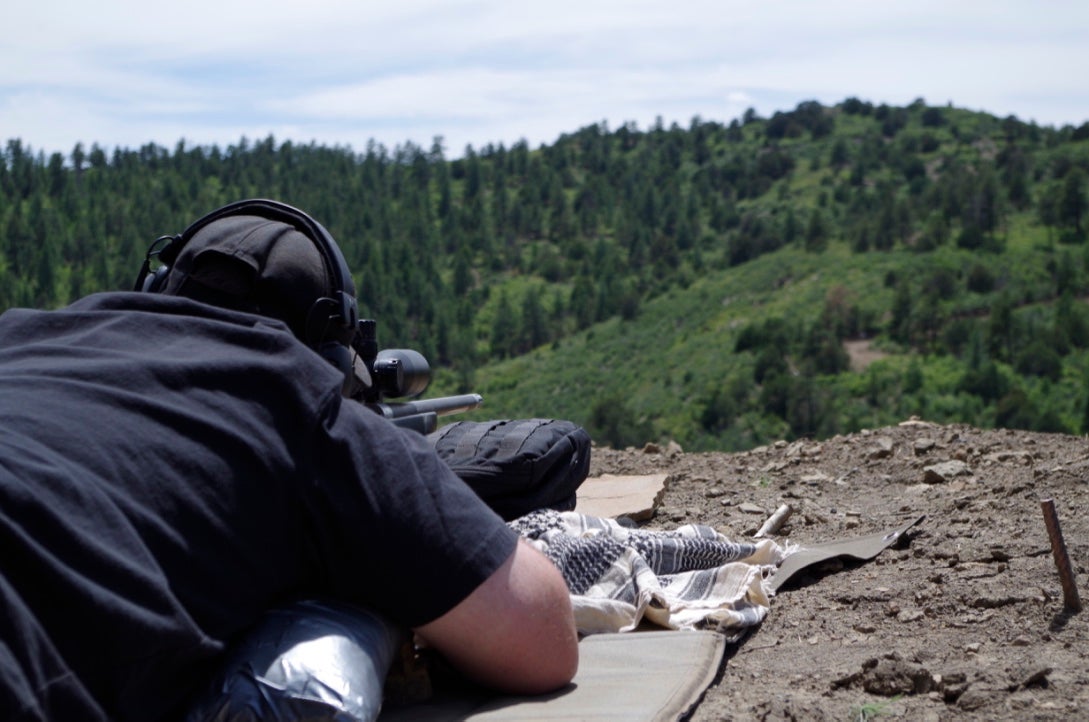
Shooting across the valley out to 1200 yards.
I cannot attest to the long term durability of the carbon fiber wrap–I have heard of such fancies delaminating over time or in exposure to consistent high temperatures. The 160 rounds I fired showed no wear on the rifle.
You can find more information about the rifle on the Christensen Arms website: [https://christensenarms.com/firearms/bolt-rifles/ridgeline%C2%AE]
Street price appears to be just sub $2000 in most places I looked online.
I’d like to give a big thanks to Legacy Sports for arranging the review, including sending the rifle, scope and ammo.
 Your Privacy Choices
Your Privacy Choices
